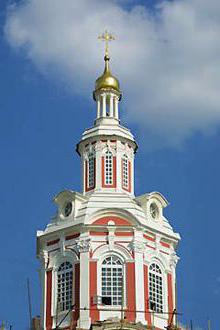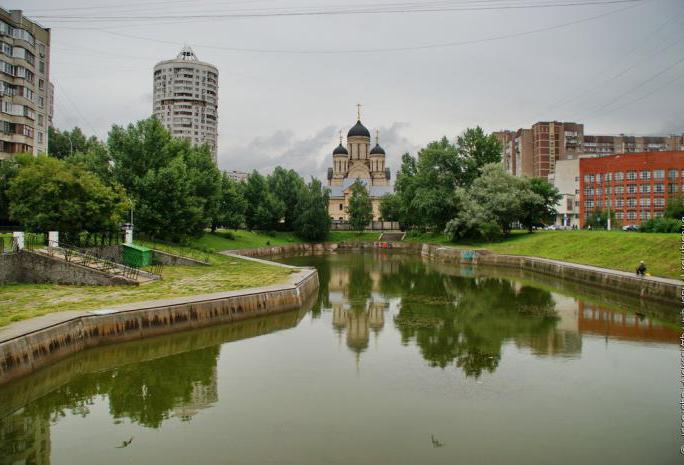One of the most interesting sightsMoscow is located on Nikolskaya street Zaikonospassky monastery. Nowadays this is a large active religious complex, which includes: Missionary, Youth and Slavic-Korean centers. Theological courses, a library and a Sunday school are also open on the territory of the monastery.
The basis of the monastery
In the 14th century on the site of Zaikonospasskythe monastery of St. Nicholas of Spassky was located. Unfortunately, there are very few records of this complex. It is only known that once the western part separated with the church standing here. The new religious center in this place was founded presumably in 1620. Since the iconic trading rows began right behind him, he was named Zaikonospassky.

According to other sources, he founded Zaikonospasskythe monastery Prince Volkonsky by order of Tsar Alexei Mikhailovich in 1600. In any case, by 1626, behind this center were two churches - stone and wooden, as well as close cells, set in straight rows. The first documentary mention of this monastery dates back to 1635. Called in those days in Moscow this monastery "teacher's". Respect in the capital, he used simply exceptional.
Academy
But the real upsurge of this religious-educationalinstitution began in 1665 thanks to the efforts of his then rector - Simeon of Polotsk. What the worldly name of this monk was, is unknown. Only his surname, Sitnianovich-Petrovsky, survived. Polotsky began to call him the former place of service. This monk transformed the usual "national" school of the monastery with semi-literate teachers into a serious educational institution.
The first attempt to create in the walls of ZaikonospasskyMonastery real Academy was undertaken in 1680 by the rector Sylvester Medvedev. This monk filed a petition to Tsar Fyodor Alekseevich about her discovery. However, the tsar died soon, and therefore it was not possible to implement the plan.
In 1687in the Zaikonospassky monastery was transferred from Epiphany Greek-Greek school. Created her brothers Likhuda, recommended to the Russian Tsar by the Eastern patriarchs. These monks were descendants of the Byzantine royal family and were trained first in Greece, and then in Venice. After the transfer of the Academy was given the name of Slavic-Greek-Latin. For a long time it remained the only higher educational institution in the state. Its rectors were the archimandrites and abbots of the monastery. Many well-known Russian scientists, including Mikhail Lomonosov, were trained in the walls of this institution.

During the Soviet era
After the revolution Zaikonospassky monastery was abolished. In 1922, the "Union of Church Revival" was organized here. However, in 1929 it was abolished, placing secular institutions in the buildings.
Since located on the territory of the monasterythe temple was of historical value, in the sixties large-scale restoration work was carried out here. On the third and fourth tiers of the church mounted decorative decoration, and on the roof mounted locks. Instead of a cross on the dome, a gold-plated pin was fixed.
In 1992, the temple of Zaikonospassky Monastery was again given to believers. Officially, as a religious center, it was revived in 2010 by the decision of the Synod of the Russian Orthodox Church.

Zaikonospassky Monastery: Schedule of Divine Services
Сегодня храм Заиконоспасского монастыря может visit any believer. Divine services are held regularly. The schedule of services varies, and it is possible to learn it only in the monastery itself. On Sundays and holidays, liturgies are mandatory here. The service starts at 9 o'clock in the morning. The all-night vigil is held on the pre-holiday days. It starts at 5 pm.
The address of the monastery
There is Zaikonospassky monastery in Moscow onto the address: st. Nikolskaya, 7-13. You should leave at the metro station "Teatralnaya". The abbot of the monastery at the present moment is Hieromonk Fr. Pyotr Afanasyev.

Architectural features of the complex
During its existence ZaikonospasskyThe monastery was rebuilt many times. In the years 1701 and 1737, here there were fires. Both times it was reconstructed. In this case, such well-known architects as IF Michurin, IP Zarudny, ZI Ivanov, MT Preobrazhensky were involved.
Acting in the monastery of the Academy in 1814was transferred to the Trinity-Sergius Lavra. At the moment it is called the Moscow spiritual. Instead, a spiritual school was opened in the Zaikonospassky Monastery. In 1825, the Assumption Cathedral was built on the territory of the complex. The author of his project was SP Obitayev.
The temple of the monastery is typicala sample of architecture of the Moscow Baroque. In 1701, during the reconstruction, a refectory was attached to it. In the period from 1701 to 1709, under the porch of the upper church, two floors of cells were built, in which the students of the academy lived. This is the main building of such complex, as Zaikonospassky monastery. You can see his photo in this article.

The teacher's building of the monastery was built presumably in the last quarter of the 17th century. In 1886 this building was built on the third floor and decorated in pseudo-Russian style.
On the west side of the complex is anotherA remarkable construction - built in 1821-1822. theological school. It represents a massive three-story building in a scant detail in the Empire style. It was erected on the foundation of the former school building.
Zaikonospassky monastery: reviews
Конечно же, отзывы об этой обители как о the oldest architectural complex of those who have ever visited it, there are only positive. Monastery buildings look really solid, beautiful and impressive, as it is supposed to be cult buildings.
Believers Christians are very good estimate andreligious activity of the monastery. The missionary center of the monastery is engaged in charitable activities, doing a great job with nursing homes and orphanages. Also, the monastery provides assistance to low-income families, mostly used, but still good things. You can bring these clothes to the needy any day from 7:00 to 21:00.

For believing Koreans in the monastery createda special center that organizes pilgrimage trips to the shrines of the capital, Moscow suburbs, as well as to monasteries of other regions of the country. In the Sunday school of the monastery classes are conducted to study the Law of God, the Church Slavonic language, Russian dance and church choir singing.












